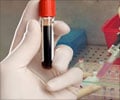A group of scientists has found a new way by which HIV, the virus that causes AIDS, can infect women.
A group of scientists has found a new way by which HIV, the virus that causes AIDS, can infect women.
Women are susceptible to HIV, but scientists have been puzzled as to how it finds its way into the female reproductive tract.Now for the first time, researchers at McMaster University have discovered the culprit could be HIV itself and what the virus does when it binds to epithelial cells.
"What it does is that it makes the electrical barrier resistance of epithelial cells decrease. By doing that, the virus can cross the barrier," lead researcher Charu Kaushic, associate professor in the Centre for Gene Therapeutics and the department of pathology and molecular medicine in the Michael G. DeGroote School of Medicine, said.
She is also a researcher with the Michael G. DeGroote Institute of Infectious Disease Research.
"This is a significant step forward in defining where prevention strategies, such as microbicides and vaccine, need to focus," she stated.
Advertisement
The study shows HIV can break down the mucosal barrier in the intestinal and female genital tract, allowing the virus to cross during intercourse.
Advertisement
This destroys the tight junctions between epithelial cells and gives HIV and other microbes access to inside the body.
Worldwide, half of the 40 million people infected with HIV are women. Among heterosexuals, women are the fastest growing group to be infected.
Scientists have been faced with the question of how HIV actually gets underneath epithelial cells to infect other cells that are susceptible to HIV.
"It's not the cells on top," Kaushic said.
"It is the immune cells underneath that have all the receptors that HIV likes to latch on to and that allow the virus to replicate and establish infection. But it has to cross the epithelial barrier first!" she added.
The McMaster researchers grew purified primary epithelial cells in the laboratory from small pieces of tissues that were removed from women's uterus during hysterectomies, with their consent.
Then, they began to study how HIV actually interacts with these cells. The electrical resistance in these cultures is used to monitor how well the epithelial cell cultures are growing and functioning.
Aisha Nazli, a researcher in Kaushic's laboratory, noticed every time she put HIV on epithelial cells their resistance went down significantly. Repeated tests confirmed this.
Kaushic said the surface protein of the virus causes the epithelial barrier to break.
"The surface protein signals to the inside of the epithelial cells by binding to it. The epithelial cells start making inflammatory proteins which cause these cells to go on their self-destructive pathway," she stated.
Kaushic's lab conducted the research in collaboration with researchers in the department of molecular genetics at the University of Toronto and the department of medical biology at Laval University.
She holds a New Investigator Award in HIV from the Canadian Institutes of Health Research (CIHR) and an Early Researcher's Award from the Ontario government.
The findings appear in the journal PLoS Pathogens.
Source-ANI
SRM















